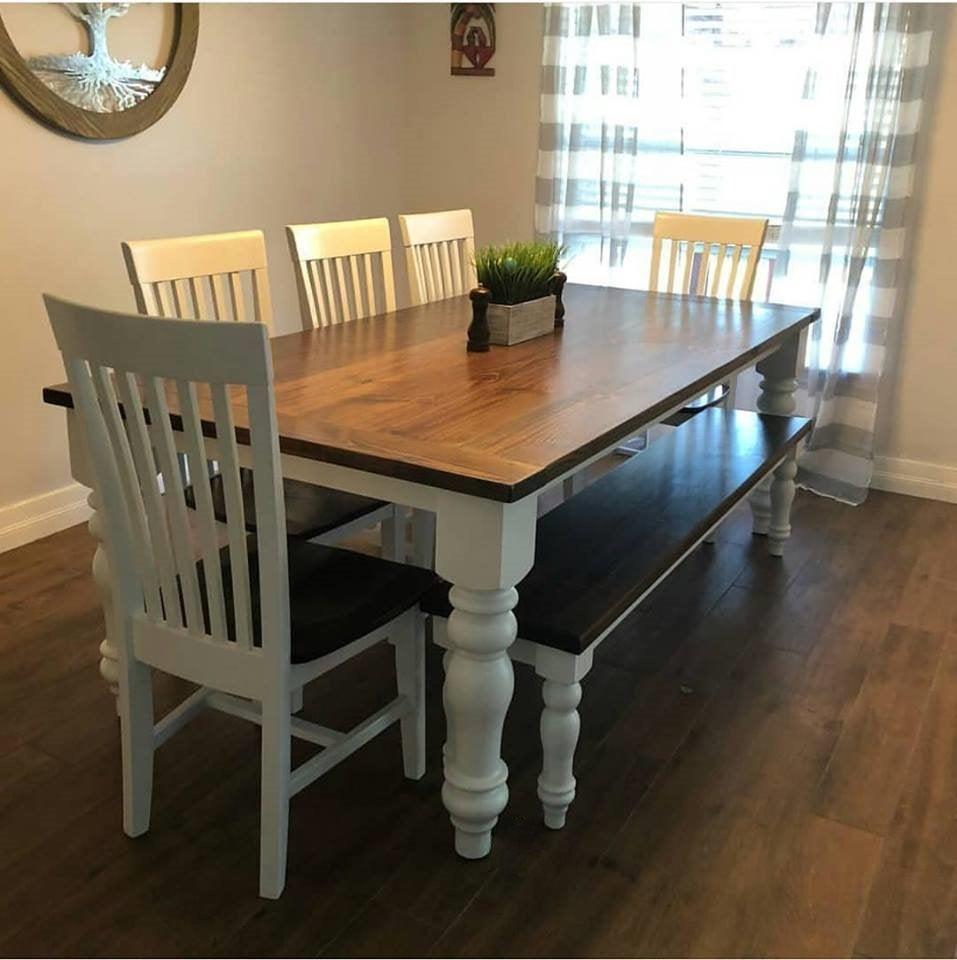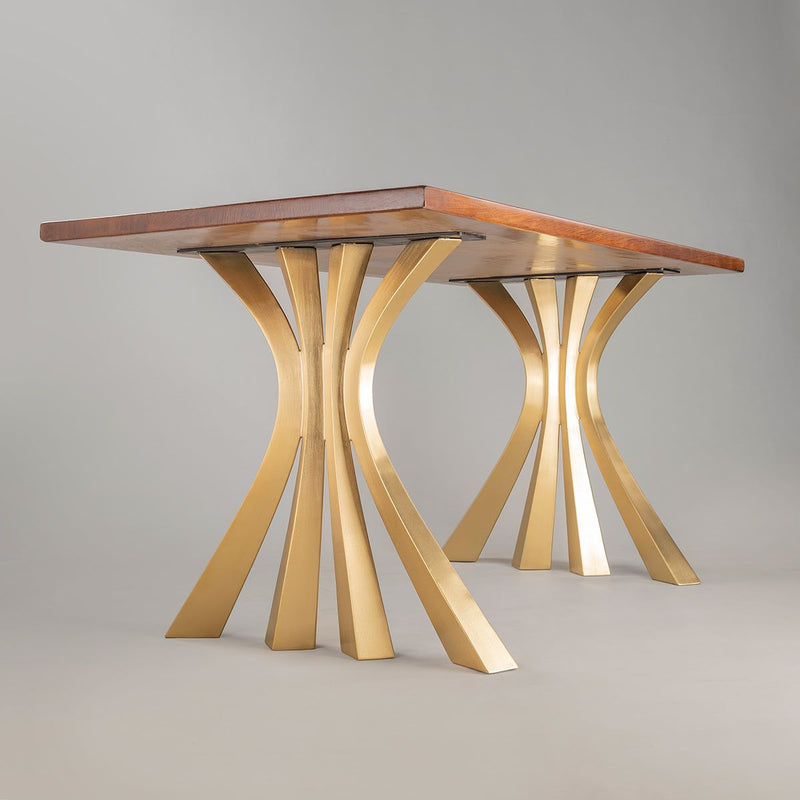Discover the most effective Materials for Dining Room Table Legs for each Style
Discover the most effective Materials for Dining Room Table Legs for each Style
Blog Article
Picking the Perfect Eating Table: What Styles Job Best for Your Home?
Choosing the ideal dining table for your home can be a nuanced procedure that balances visual appeals and capability. Whether your area leans in the direction of conventional beauty, modern-day minimalism, rustic beauty, or industrial trendy, the variety of designs offered can accommodate varied preferences. Each design offers distinct benefits and difficulties that can either improve or disrupt your dining area's harmony. Understanding exactly how different materials, shapes, and sizes interact with your existing decoration is crucial. To browse these choices efficiently and locate a table that absolutely matches your home, think about the following facets carefully.
Analyzing Your Space
Assessing the measurements and design of your eating area is a vital primary step in choosing the ideal dining table. Begin by gauging the size and width of the space, representing entrances, home windows, and various other architectural functions that could influence table placement. This makes certain that your table not only fits however additionally enables comfortable motion around it.
Consider the variety of people you commonly captivate. A table needs to suit your family's day-to-day needs while offering enough adaptability for periodic guests. As a regulation of thumb, allocate at the very least 24 inches of table width each to guarantee a comfortable eating experience.
It's likewise necessary to preserve appropriate clearance around the table. Preferably, there must be at the very least 36 inches in between the table edge and wall surfaces or other furnishings, allowing easy gain access to and activity. For spaces where chairs with arms or additional storage space devices like buffets are included, increasing this clearance to 48 inches is advisable.
Illumination and environment play substantial roles also. Make certain that your dining table straightens with existing lighting fixtures or strategy for sufficient lights solutions. This extensive spatial assessment assurances that your dining table not just fits physically but additionally harmonizes with your space's general capability and visual.
Popular Table Styles

Traditional dining tables frequently feature luxuriant information, rounded legs, and rich wood surfaces, evoking a sense of classic style. They are ideal for homes with timeless style or those wanting to include a touch of refinement to their eating location.
Modern eating tables prioritize simpleness and tidy lines, often incorporating materials like glass and metal. These tables are optimal for contemporary rooms, giving a sleek and minimalist appearance that enhances minimalist design viewpoints.
Rustic table, on the other hand, stress all-natural products and a handcrafted look - dining room table legs. They often feature redeemed wood and a distressed coating, producing a cozy and inviting atmosphere. These tables work well in farmhouse-style homes or those seeking a comfortable, natural feel
Industrial dining tables combine resources such as metal and timber, often showcasing an utilitarian visual. This design is fit for loft spaces or urban areas, adding a touch of rugged charm and resilience to the dining experience.
Each style uses unique advantages, making it necessary to choose one that aligns with your home's total style and your individual preferences.
Product Selections
When picking a dining table, the option of product plays a vital function in identifying both the table's visual appeals and capability. Wood, steel, glass, and composite materials each offer unique advantages and obstacles, making it imperative to straighten the product with your home's design and click here for more info way of living demands.
Wood is a timeless and flexible option, available in varieties such as oak, walnut, and mahogany. Understood for its durability and heat, timber matches both conventional and modern interiors. However, it calls for find more regular maintenance to avoid scrapes and warping.
Metal tables, commonly crafted from stainless-steel, light weight aluminum, or wrought iron, are praised for their modern charm and toughness. They are especially matched for industrial or minimalist setups but can be vulnerable to damages and might really feel chilly to the touch.
Glass table bring an air of sophistication and visibility, ideal for smaller sized rooms as they develop an illusion of even more room. While simple to tidy, glass can be at risk to smudges and requires cautious taking care of to avoid chips and fractures.
Composite products, such as MDF and plywood, offer affordable and adjustable options, though they might do not have the durability of natural materials. Choosing the appropriate material ensures your eating table is both a useful possession and an aesthetic joy.
Shape and Size Factors To Consider
After determining the ideal material for your eating table, the next factor to consider is choosing the best sizes and shape to fit your space. The form of the table significantly influences the room's aesthetic and performance. Rectangular tables, one of the most usual form, are excellent for bigger rooms and can suit a higher number of guests. They also permit a much more official eating experience. Conversely, rounded tables cultivate a feeling of affection and are excellent for smaller dining locations, motivating discussion by getting rid of corners and making everyone feel just as consisted of.
As a rule of thumb, assign at least 24 inches of table width per person to make sure comfy eating. Additionally, redirected here consider the table's clearance room: there should be at the very least 36 inches between the table side and the walls or other furniture. Expanding tables offer adaptability if you frequently host bigger gatherings, providing added seats when required without occupying added space daily.
Matching Your Decor
Picking a table that harmonizes with your existing style is essential in producing a natural and welcoming room. Begin by examining your present interior layout style, whether it be modern, standard, rustic, or diverse. The table ought to complement the total aesthetic, not take on it. For instance, a smooth, minimal table with clean lines is optimal for a contemporary home, while a vintage, elaborate table suits a more standard setting.
Shade and material are similarly significant. If your decor features cozy tones and natural materials, think about a wooden table to enhance the natural feel. Alternatively, a glass or metal table may be better in a room controlled by amazing colors and commercial aspects. Take note of the coating, as it needs to mirror various other furnishings and fixtures to keep consistency.
A rough-hewn, redeemed timber table can include character to a rustic area, while a polished marble surface area can raise a luxurious eating area. A well-matched eating table not only improves visual charm but also improves the overall dining experience.

Verdict
Picking the ideal eating table requires cautious consideration of area, style, materials, form, and dimension. Standard tables enhance classic interiors with abundant wood finishes, while modern-day tables suit modern settings through glass and metal.
Report this page